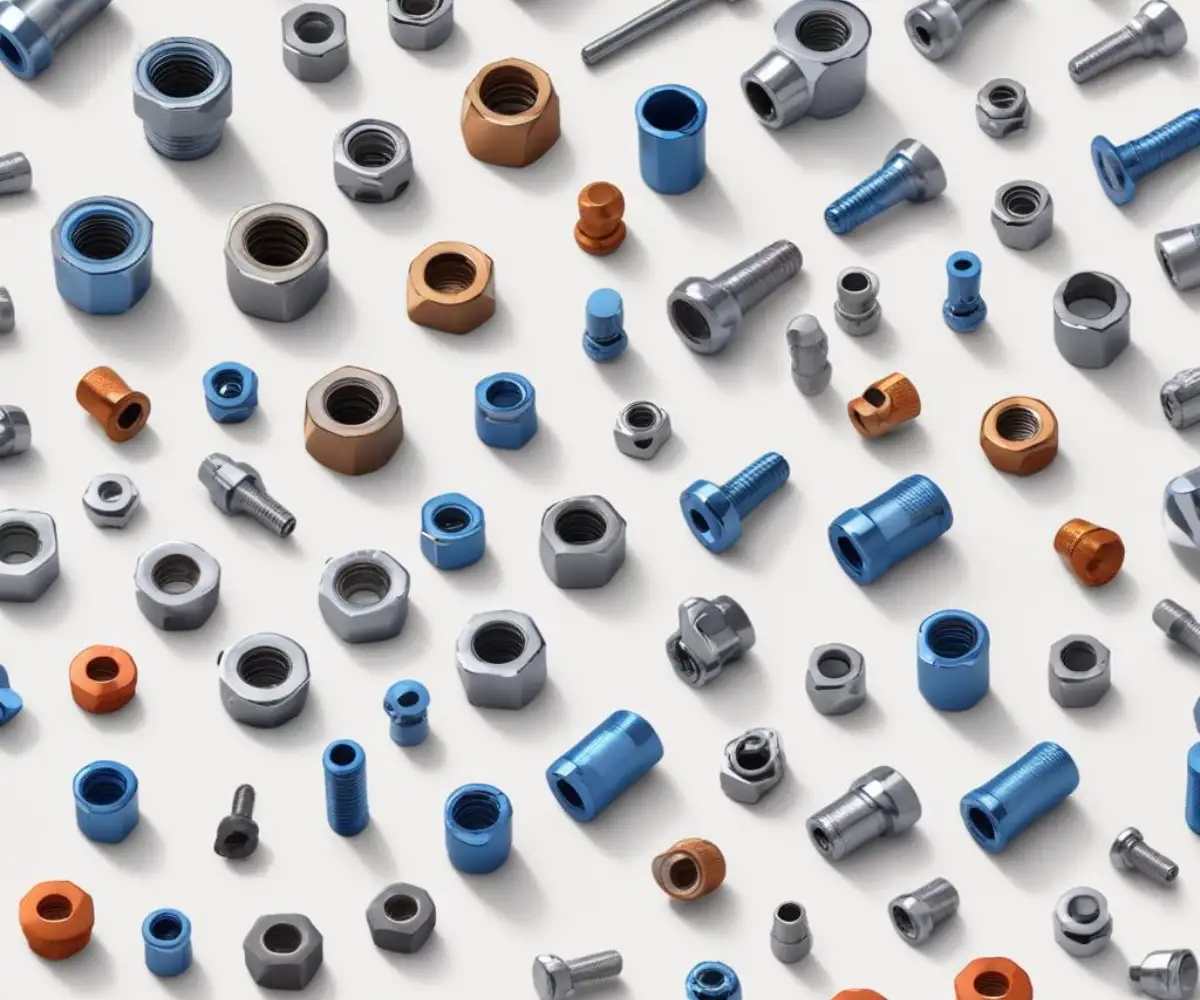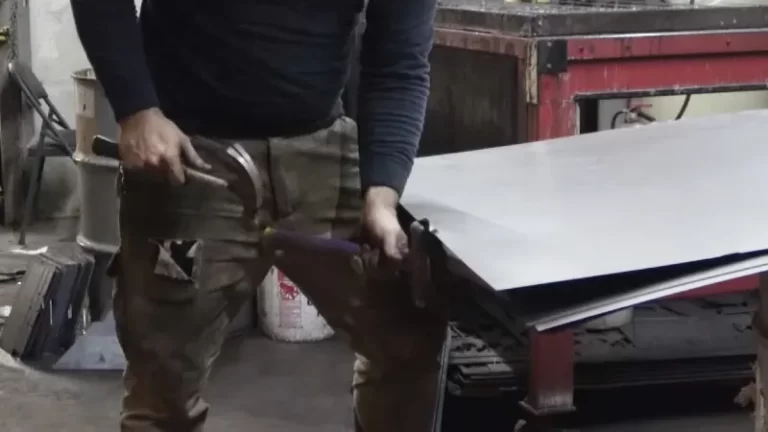Wing Nut Alternatives That Work Better (Stop Stripping!)
Wing nuts are everywhere. From drum sets and bicycle seats to workshop jigs and machinery covers, their two-pronged design promises easy, tool-free adjustment. But this convenience often comes at a steep price.
Many users find that wing nuts constantly loosen under vibration, are difficult to properly torque, and their “wings” are prone to snapping off. Relying on them in the wrong application can lead to frustration, project failure, or even safety hazards.
This guide explores the common failings of the traditional wing nut and introduces a world of superior alternatives. You can find a fastener that provides better grip, superior holding power, and greater durability for your specific needs.
You'll Learn About
Why Your Wing Nut Keeps Failing: The Hidden Problems
The very design that makes a wing nut convenient is also its greatest weakness. Understanding these core issues is the first step toward finding a better solution for your projects.
The Vibration Loosening Effect
One of the most common complaints about wing nuts is their tendency to back off under any kind of vibration. The large, unsupported “wings” can catch vibrations and slowly rotate, causing the nut to lose its grip.
This is especially problematic in applications involving motors, moving parts, or even just frequent handling. You are left constantly re-tightening the fastener, which wastes time and can lead to inconsistent clamping pressure.
The Torque Dilemma: Too Much or Too Little?
Applying the correct amount of clamping force with a wing nut is mostly guesswork. The small surface area of the wings can be painful to tighten by hand, especially if significant force is needed.
This often leads to under-tightening, leaving your assembly insecure. Conversely, using pliers or other tools to get more leverage can easily damage the wings or strip the threads, destroying the nut completely.
Material and Design Flaws
Many commercially available wing nuts are made from cheap, brittle cast metals like zinc alloy. These materials simply cannot withstand significant stress or repeated use.
The wings are inherent weak points in the design. A slight impact or an attempt to overtighten them can cause them to snap off, rendering the nut useless and difficult to remove.
The Ultimate Guide to Wing Nut Alternatives
Fortunately, a wide variety of fasteners can replace wing nuts, offering significant improvements in performance, ergonomics, and reliability. Choosing the right one depends on your specific needs for torque, adjustment speed, and security.
For Low-Profile Clamping: Knurled Thumb Nuts
Knurled thumb nuts are a direct and simple upgrade from wing nuts. They feature a ridged, textured outer surface that provides a secure grip for your fingers.
Their round, low-profile design is a major advantage in tight spaces where the “wings” of a traditional nut would get in the way. They are ideal for panel covers, adjustment screws on electronics, and light-duty jigs.

For Higher Torque Needs: Star Knobs and T-Handles
When you need more clamping force than a simple thumb nut can provide, star knobs (or hand knobs) are the perfect solution. Their lobed design provides an excellent ergonomic grip, allowing you to apply significant torque without discomfort.
T-handle nuts offer even more leverage, functioning like a built-in wrench. These are commonly found on machine tools, heavy-duty jigs, and any application where a strong, secure hold is critical. Ensuring your jig is secure is paramount, preventing dangerous slips that could lead to kickback, a critical safety concern for any power tool user, much like understanding the specific warnings for a saw like the DWE7480 about dado usage.
The Speed Solution: Cam and Lever Nuts
For applications requiring very fast and repetitive clamping and unclamping, cam levers are unbeatable. A simple flip of a lever provides instant and secure clamping force.
These are perfect for production jigs, quick-release camera mounts, and any setup that needs to be changed or adjusted frequently. While they don’t allow for fine-tuning of pressure, their speed is a massive efficiency booster.
Comparison Table: Choosing the Right Alternative
Selecting the best fastener for your job requires balancing speed, strength, and convenience. This table breaks down the key characteristics of each popular wing nut alternative.
| Alternative Type | Torque Potential | Adjustment Speed | Vibration Resistance | Best For |
|---|---|---|---|---|
| Knurled Thumb Nut | Low | Moderate | Low | Low-profile adjustments, panel covers. |
| Star Knob | Medium to High | Moderate | Moderate | Woodworking jigs, machine adjustments. |
| T-Handle Nut | High | Moderate | Moderate | Heavy-duty clamping, fixtures. |
| Cam Lever | High (Set) | Very Fast | High | Quick-release applications, production jigs. |
| Nylon Insert Lock Nut | (Tool Required) | Slow | Very High | Semi-permanent, high-vibration areas. |
Specialty Fasteners for Advanced Applications
Beyond the common replacements, there is a world of specialized hardware designed for specific industrial and technical challenges. These advanced fasteners offer unique benefits that can solve problems standard hardware cannot touch.
Quarter-Turn Fasteners: The Speed Demons
As the name implies, these fasteners lock or unlock with a simple 90-degree turn. They are a two-part system, consisting of a stud and a receptacle, that provides a strong and vibration-resistant connection.
You will often find them securing body panels on race cars, avionics equipment, and server rack doors. They are the ultimate solution when you need both rapid access and absolute security against vibration.
Indexing Plungers: For Precision Positioning
Indexing plungers are sophisticated components used for precise positioning. They feature a spring-loaded pin that extends into a receiving hole or slot, locking a component in a specific, repeatable location.
To move the component, you simply pull a knob or ring to retract the pin. They are essential for adjustable machine parts, rotating fixtures, and any application where you need to lock something into a series of predefined positions quickly and accurately.
A Note on Material and Quality
The material of your fastener is just as important as its design. Choosing the wrong material can lead to corrosion, mechanical failure, and damage to your project.
Using the wrong fastener material in a damp or outdoor environment can lead to rust and seizure. This principle of material suitability is critical everywhere; for instance, improperly addressing moisture in a basement can lead to much bigger problems, forcing you to research Drylok and mold solutions to fix the underlying issue.
Making the Right Choice
For general use, zinc-plated steel offers a baseline of corrosion resistance. However, for outdoor, marine, or corrosive environments, stainless steel is always the superior choice.
For applications where you need to avoid scratching a surface or require electrical insulation, nylon fasteners are an excellent option. The investment in quality materials will always pay off in longevity and reliability. Just as choosing the right tool for stripping a delicate surface, like deciding between Citristrip paste versus gel, selecting the correct fastener material can save you from costly damage and frustration.
Frequently Asked Questions
What are the main disadvantages of using wing nuts?
Wing nuts are not suitable for high-stress or heavy-duty applications because they are tightened by hand and have limited torque. They are also prone to loosening in high-vibration environments and the “wings” can be a safety hazard by snagging on objects.
When should I consider an alternative to a wing nut?
You should look for an alternative to a wing nut when your application requires a very tight connection, will be subjected to significant vibration, or is in a tight space where the wings are difficult to turn. They are also not ideal for permanent installations where frequent adjustments are not needed.
What are some common alternatives to wing nuts?
Common alternatives to wing nuts include standard hex nuts, which require a wrench for tightening and provide a more secure hold. For applications requiring quick release without tools, thumb nuts or quarter-turn fasteners can be good options. In some cases, simple nuts like plain or cap nuts are used for a lower profile.
Are there alternatives that are also tool-free?
Yes, several tool-free alternatives to wing nuts are available. Thumb nuts offer a knurled grip for hand-tightening, and various types of quick-release or quarter-turn fasteners are designed for rapid assembly and disassembly without tools. Knob-style fasteners also provide a secure grip for manual adjustments.
Can I use a regular nut as a wing nut alternative?
Yes, a standard hex nut can be a very effective alternative to a wing nut, especially when a stronger and more permanent hold is required. However, you will need a wrench or socket to tighten and loosen a hex nut, so it is not a direct replacement if tool-free operation is your primary need.
Upgrade Your Projects Today
Moving beyond the standard wing nut opens up a new level of efficiency, security, and professionalism for your projects. They may seem like a small detail, but the right fastener can make all the difference.
By evaluating your needs for torque, speed, and vibration resistance, you can select an alternative that will not slip, strip, or snap. This simple hardware upgrade will save you time, reduce frustration, and result in a better, more reliable finished product.

